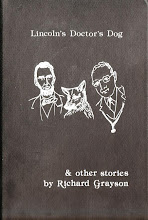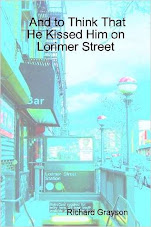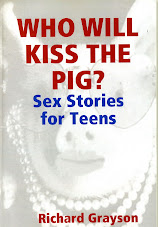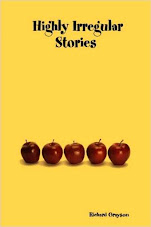
Wednesday, June 21, 2006
HIGHLY IRREGULAR STORIES by Richard Grayson
Dumbo Books of Brooklyn
72 Conselyea Street, Brooklyn, NY 11211
http://dumbobooksofbrooklyn.blogspot.com
www.richardgrayson.com
Genre: Fiction/Humor
Rating: Unusual
ISBN: 1411657969, $12.95, 177 pp, 2006
Highly Irregular Stories is, indeed, a most appropriate title for this compilation of prior writings: Disjointed Fictions, Eating at Arby’s, The Greatest Short Story That Absolutely Ever Was and Narcissism and Me.
Richard Grayson opens with: "The anarchist’s bomb that killed Czar Alexander II in St. Petersburg in 1881 led to the Russian pogroms and the anti-Semite May Laws of 1882. To these events we Americans owe countless things: the comedy of Woody Allen and Lenny Bruce; the popularity of psychoanalysis . . ."
It’s interesting that Woody Allen and psychoanalysis are first among his list and that’s just what I was feeling as I read this book. Grayson has taken that Woody Allen-type New York humor about a self-deprecating, neurotic, talented man one step further into the twilight zone.
As I’m not a New Yorker and never could fully appreciate Woody Allen’s humor, I’ll let the book stand on its own. My experience of reading Eating at Arby’s about Manny and Zelda in downtown Miami brought back memories of learning to read with Dick and Jane. It almost has the same rhythm and meaningful depth. We were just missing "See Spot run."
But to be fair, I would like to quote from "Myself Redux" which I particularly enjoyed: one, for the historical perspective and two, for the Kurt Vonnegut-flavor of humor:
""On Wednesday, the thirteenth day of October in the year many people call 49 B.C., Caius Julius Caesar, a Roman general, crossed the ancient watery boundary between Cisaplin Gaul and Italy known as the River Rubicon, thus making immortal the phrase "to cross the Rubicon," meaning "to take a decisive and irrevocable step."
Precisely two millennia later, on Wednesday, the thirteenth of October in the Christian year 1951, my Jewish parents took a decisive and irrevocable step in a room of the Quality Courts Motel outside Corning, New York. Within a week, the embryo that was to become the person writing these words was as large as one of Caius Julius Caesar’s fingernails. A tube formed within the embryo. This enlarged at a certain point, and then it began to pulsate. Eventually this pulsating tube developed into a four-chambered organ which circulated the fluid known as blood throughout my body.
On Sunday, October 17, 1971, 185 years and one day after the establishment of the United States Bureau of the Mint, I decided that my four-chambered pulsating organ had been broken because I had found the 18-year-old female whom I described as my "girlfriend" in bed with my 16-year-old brother, their four-chambered organs pulsating rapidly.
One week later, on the twenty-sixth anniversary of the establishment of the United Nations, I attempted to stop the pulsating of my four-chambered organ by making a three centimeter incision with a razor blade across my left wrist.
The following Monday, October 25, 1971, known that year as "Veterans Day" due to federal legislation enacted to give citizens a three-day holiday weekend, I found myself in the offices of the clinical psychologist Marilyn Wertheim, crying into a tissue.""
The story goes on to tell us: his girlfriend becomes pregnant, his brother is killed when hit by a bus, he marries his girlfriend, she has the baby, he doesn’t know whether he’s a father or an uncle, the baby dies, and they annul the marriage. There’s more but that will give you an idea of the beginning.
So, if you’re a Woody Allen fan and using the same stuff as Richard, you just might enjoy this book and a trip into the twilight zone.
Richard Grayson is a prolific writer and to appreciate who he is, what he has accomplished and what he has written, I refer you to his website: www.richardgrayson.com.
Reviewed by Kaye Trout - June 21, 2006 - Copyright








































